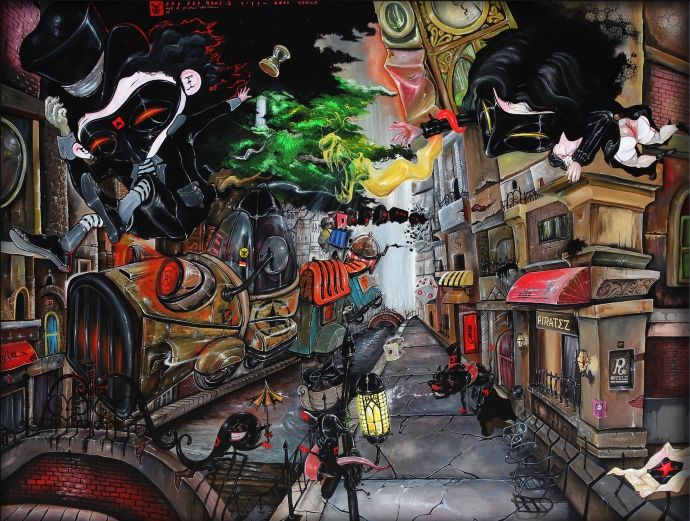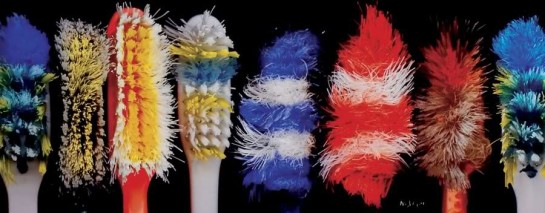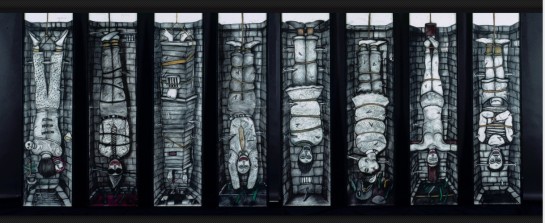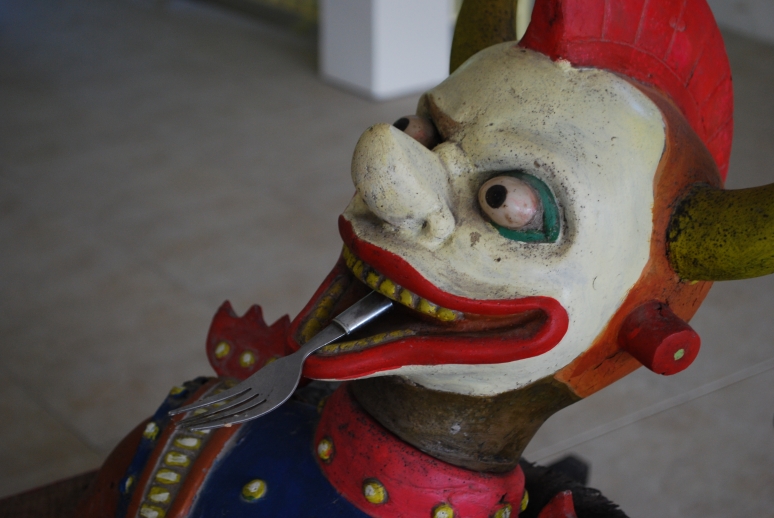
I came to know about the young Indonesian artist Oky Rey Montha from his solo show at Primo Marella Gallery in Milan and I’ll end up interviewing him for my book on contemporary art in Indonesia.
He seems to be the kinky and eccentric kink of artist that loves to get lost in his imagination.
With a dark, tim burtonian look and emo hair and makeup he’s directly out from one of his paintings.
His work reminds me of the pop-surrealism trend and is inspired by comics. Asian market sought this kind of paintings; at the same time Oky himself seems not to care too much about the market.
I look at him as a symbol of his generation that isn’t bother anymore with tradition and Wayang Puppets, but it’s more into pop and fantasy realms.
At the same time he knows how to take advantages of the web and he’s launching is own clothes collection called “Piratez” on facebook and on the blogosphere. He’s also an indie musician and loves to make drum performances during the exhibition openings.








